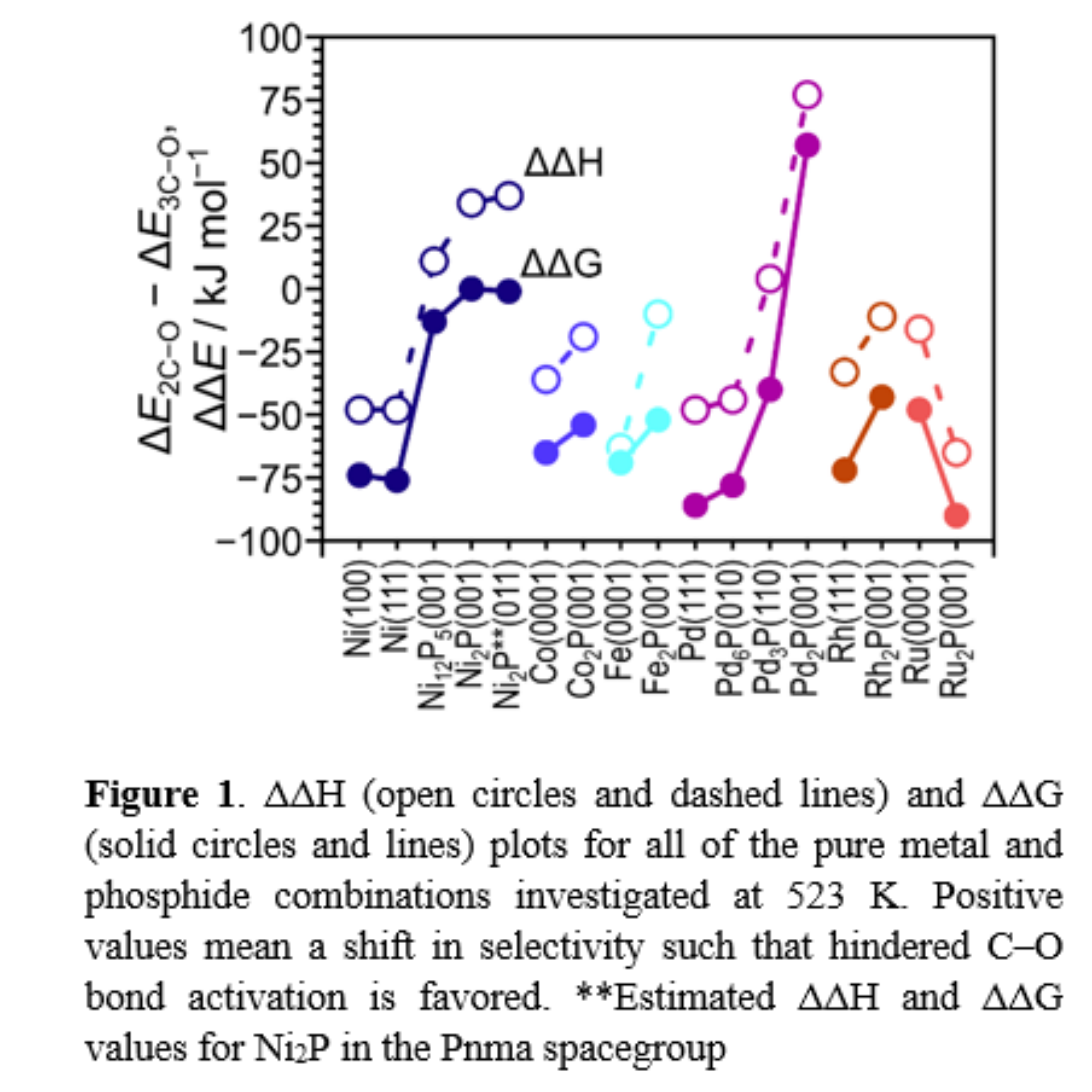Contrasts between hindered and unhindered C–O activations within biomass derived molecules can be investigated using 2-methyltetrahydrofuran (MTHF) as a model compound. MTHF contains a furan ring whose O atom has neighboring secondary (
2C) and tertiary (
3C) carbons. Experiments and DFT suggest that adding P to Ni results in a shift in selectivity towards a preference for
3C–O activation over the undesired
2C–O reaction. Activation enthalpy (ΔΔH) and free energy (ΔΔG) differences (ΔG
2C–O – ΔG
3C–O) were calculated to predict selectivity with the Ni(111) surface having lower ΔΔH and ΔΔG values (−48 and −70 kJ mol
−1, respectively) than Ni
2P(001) (34 and 0 kJ mol
−1), suggesting that selectivity increases with P content [1]. Recent work attempted to understand the reason why P causes this shift in selectivity by investigating electronic effects of P addition through other transition metal phosphides isostructural to Ni
2P(001). Pd
2P, Rh
2P Fe
2P, Ru
2P and Co
2P (in addition to Ni
2P) were all investigated and a nearly ubiquitous shift in selectivity was observed with all phosphide materials except Ru
2P showing greater ΔΔH and ΔΔG values than their pure metal counterparts (Fig. 1) [2]. In the present contribution, we continue this work by investigating the effects of geometry (crystal structure) on selectivity and P content for a different series of metal phosphides. We contrast Ni
2P in the Pnma spacegroup to Ni
2P in the original P62m spacegroup, and find that, at least between these two spacegroups, there is an almost negligible shift in selectivity. For Pd, we contrast Pd, Pd
6P, Pd
3P, and Pd
2P, and show a monotonic increase in ΔΔH and ΔΔG values (consistent with greater
3C–O activation selectivity) like that observed for Ni phosphides. Overall, we see that P incorporation increases selectivity towards
3C–O activation for all metals except Ru.
References
[1] ACS Catal. 2018, 8, 7141–7157. [2] J. Catal. 2023, 421, 403–418.


